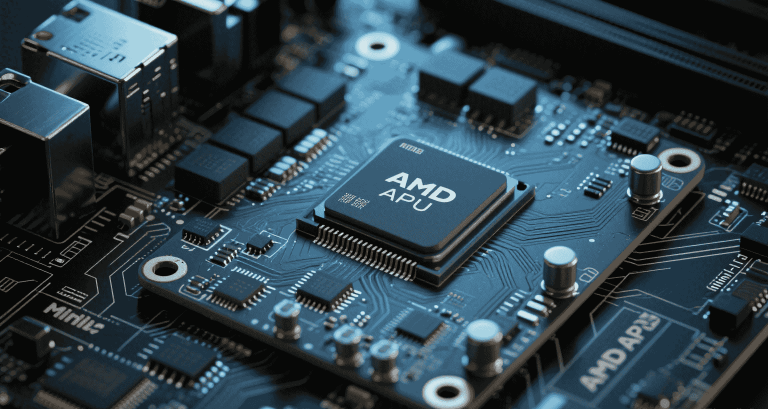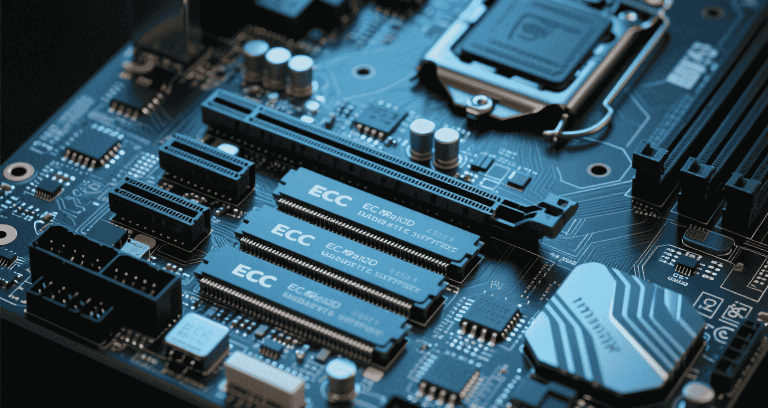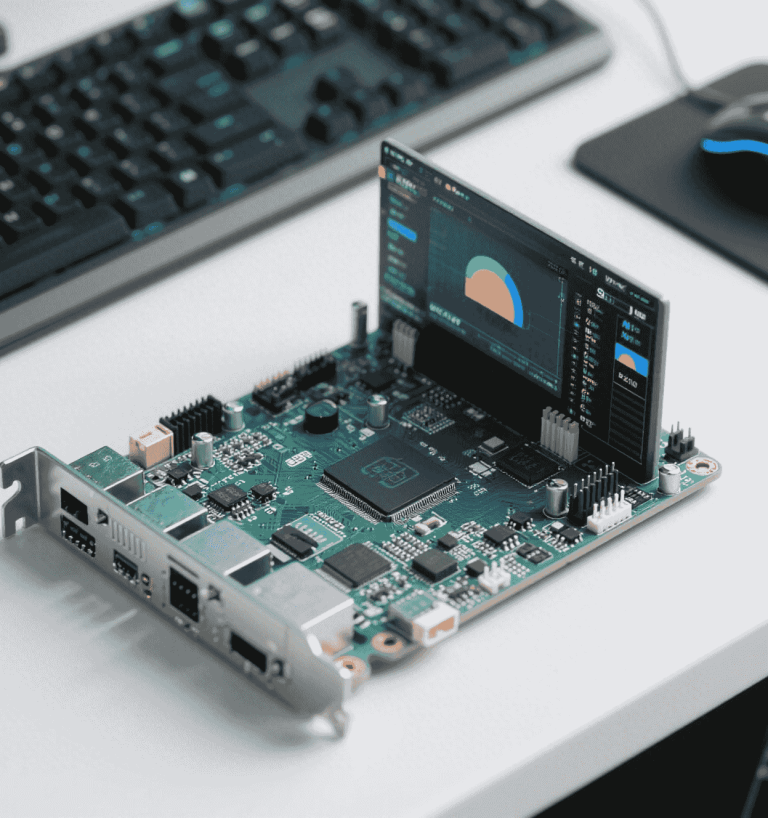Intel Celeron N300: Engineering Low-Power Performance for Modern Embedded Systems
Table of Contents
Introduction: The N300’s Place in Embedded and SFF Markets
Why the N300 is compelling: It brings modern media decode, responsive quad-core compute, and a tight SoC footprint to builds where silence, uptime, and energy cost dominate—fanless mini-PCs, thin clients, industrial gateways, and compact NAS appliances.
Positioning within the Alder Lake-N lineup
N300 sits alongside N100/N200 as a Gracemont-based efficiency SKU. Compared with prior Jasper Lake parts (N5105/N6005), N300 benefits from Gen12.2 graphics, improved power gating, and better C-state residency, enabling more predictable idle behavior and smoother media experiences.
Who should care
- Embedded integrators delivering unattended, 24/7 nodes with strict acoustic limits.
- Homelab and NAS builders targeting single-digit-watt idle with real multi-stream decode.
- OEMs standardizing on DC-in Mini-ITX or sealed mini-PCs with low service overhead.
Architecture & SoC Integration
N300 combines four Gracemont E-cores, an on-die platform controller, a modern display/media engine, and PCIe roots on Intel 7. This consolidation shortens traces, eases EMI control, and simplifies power delivery on cramped Mini-ITX PCBs.
Four Gracemont cores, 7 W nominal TDP
- 4C/4T (no Hyper-Threading) makes scheduling predictable and thermals linear.
- Low-latency integer paths and capable load/store for brokers, dashboards, and automation runtimes.
Integrated PCH, memory & I/O
With the I/O hub on die, designers can reduce board layers and free routing near DIMMs and M.2 slots. It also improves low-power states by reducing always-on island leakage.
Intel 7 (10 nm enhanced) advantages
Improved leakage and fine-grained power gating increase deep C-state residency, which translates into cooler idle—even inside sealed boxes—provided firmware enables it.
Power Consumption & Idle Realities
Datasheet TDP isn’t wall power. Feature controllers, board VRM efficiency, and PSU behavior often dominate real numbers. Community reports frequently land idle around 10–14 W on feature-rich boards, with lean DC-in designs idling lower.
Observed numbers vs expectation
“Think 5 W… whereas that N300 will use 12 W to watch the same video.” — user reports in home media contexts
Two ITX boards with identical CPUs can differ by several watts due to extra NICs, RGB/MCUs, or TB/USB4 controllers left active. Choose minimalist boards if your target is sub-10 W idle.
PSU and motherboard impact
- PSUs: Oversized ATX supplies can waste 3–6 W at low load. Prefer quality DC-in or SFX Gold/Platinum with strong efficiency below 30 W.
- Motherboards: Efficient VRMs and the ability to disable unused controllers drive idle down measurably.
BIOS power limits (PL1/PL2)
Conservative PL1/PL2 caps stabilize thermals and reduce acoustic spikes. For signage and gateways, prioritize steady clocks over short-burst peak scores.
BIOS & Tuning for Sustained Performance
Firmware strategy sets the tone for wall-meter outcomes. Out-of-box profiles often favor desktop bursts; embedded targets benefit from efficiency-first switches.
Key firmware switches (practical)
- Enable deep C-states (C6/C8+) and ASPM L1.2 across PCIe roots.
- Disable unused devices (extra SATA ports, LED controllers, secondary audio).
- Fan curves tied to VRM/SoC sensors, not only CPU diode, to preempt hotspots.
PL1/PL2 guidance
| Chassis Class | Suggested PL1 | Suggested PL2 | Notes |
|---|---|---|---|
| Sealed fanless | 8–10 W | 12–15 W | Minimize temp spikes; favor stable clocks |
| Vented SFF w/slow fan | 10–12 W | 18–22 W | Allows brief bursts without throttling |
| Actively cooled ITX | 12–15 W | 22–28 W | For transient-heavy desktop use |
OS-level complements
On Linux, confirm intel_pstate powersave, NVMe APST, and NIC power save. On Windows, use “Balanced” with modern standby and vendor GPU/ME updates.
Thermal Performance & Passive Cooling Viability
Fanless N300 is achievable with proper conduction paths and conservative boosts. The usual culprits for runaway temps are VRM zones and NVMe, not the SoC itself.
Typical fanless outcomes
With a vertical fin stack and thermal bridges to the lid, sustained mixed loads often settle ~50–60 °C in 22–25 °C ambient. Sealed boxes without vents can creep higher.
Case study: hitting ~99 °C
Compact barebones with dense internals (e.g., small prebuilt minis) can spike to 90–99 °C under load. Adding a 40 mm blower @ 800–1000 RPM or cutting an intake slot commonly drops peak by 10–15 °C. Limiting PL2 further helps.
Conduction tips
- Use thick baseplates and long thermal pads to couple SoC/VRM to chassis.
- Fit M.2 shields; avoid stacking NVMe under dense cables.
Convection tips
- Favor top vents and a chimney effect; orient fins vertically.
- Keep cable blankets off VRM heatsinks; route flat ribbons where possible.
GPU & Multimedia Capability
Gen12.2 iGPU plus a modern media block makes N300 comfortable for HTPC playback, dual displays, and desktop UX—while keeping CPU utilization low.
UHD Gen12.2, 32 EUs (typical)
- Fluent 1080p desktop; competent 4K media playback.
- Light 3D only; prioritize media decode and composition.
Codec support (hardware decode)
| Codec | Decode | Transcode Guidance |
|---|---|---|
| AV1 | Yes | Prefer direct play; transcode only low bitrate |
| HEVC/H.265 | Yes | Single/light streams comfortably |
| VP9/H.264 | Yes | Multiple 1080p streams feasible |
Display paths
Most boards expose DP + HDMI (sometimes Type-C DP Alt-Mode). For signage, lock 60 Hz and SDR unless you calibrate HDR.
Memory & Storage Interfaces
Memory bandwidth directly affects iGPU headroom; storage selection determines both idle draw and hot spot behavior. For appliances, stability and thermals trump peak sequential scores.
DDR4 vs LPDDR5
| Memory | Bandwidth | Idle Power | Upgradability | Best for |
|---|---|---|---|---|
| DDR4 SODIMM | Good | Low | Yes | ITX boards, field serviceability |
| LPDDR5 (soldered) | Higher | Very low | No | Sealed mini-PCs, kiosks, HTPCs |
NVMe, SATA, eMMC
- NVMe: fastest; can hit 60–70 °C during long writes; add pad/shield.
- SATA SSD: excellent efficiency; great for fanless appliances.
- eMMC: low-cost, read-mostly images; limited endurance.
Thermal behavior in compact builds
Plan for storage events (scrubs, backups) to set PSU and thermal margins, not just CPU load. NVMe throttling can cascade into UI stutters—watch temps.
Real-World Benchmarks & Usage Comparisons
N300’s value is quiet, sustained light compute with rich media decode and low idle. It won’t win peak benchmarks, but it will replace noisy small servers.
N300 vs N100/N5105/N6005
| Aspect | N300 (ADL-N) | N100 (ADL-N) | N5105/N6005 (Jasper) |
|---|---|---|---|
| CPU µarch | Gracemont | Gracemont | Tremont |
| iGPU | Gen12.2 | Gen12.2 | Gen11-class |
| Media (AV1) | HW decode | HW decode | Limited/none by SKU |
| Idle behavior | Excellent* | Excellent* | Good |
Against ARM SBCs (e.g., RPi 5)
- ARM wins on lowest idle and price per unit.
- N300 wins on x86 software breadth, desktop/media paths, and I/O consistency for ITX ecosystems.
Enterprise-like tasks
For homelab NAS with simultaneous media streaming, users report ~40% CPU with mixed workloads when leveraging hardware decode and sensible transcode policies.
Embedded Deployments & Field-Proven Use Cases
Patterns from field deployments show where N300 shines and what to pre-empt during design.
OPNsense/pfSense firewalls
- 2.5 GbE line-rate NAT is achievable; IDS/IPS reduces headroom—tailor rule sets.
- Add a small 40 mm fan or improve conduction on NIC/VRM zones for sustained throughput.
NAS nodes
SSD-centric arrays deliver silent efficiency. For HDD pools, plan spin-down windows and map scrub times to off-hours. Budget PSU for spin-up currents.
HTPC and digital signage
Use AV1/HEVC hardware decode, dual-channel memory, and lock 60 Hz refresh. Prefer SDR unless HDR is calibrated end-to-end.
Best Practices & Design Recommendations
Design to N300’s strengths: low idle, modern media, modest thermals. Validate with 12–24 h thermal logs and wall-meter profiles.
Platform selection
- Prefer lean Mini-ITX boards (DC-in, efficient VRMs, minimal always-on controllers).
- For sealed boxes, consider LPDDR5 mini-PC variants with robust conduction paths.
- Choose NVMe with heatsinks or opt for SATA SSDs in fully fanless designs.
Firmware/OS checklist
Firmware
- Enable C6/C8+, ASPM L1.2; disable unused I/O.
- Set PL1/PL2 to match chassis; tie fans to VRM/SoC sensors.
Linux
# Power & device saves
sudo powertop --auto-tune
sudo ethtool -s eth0 wol d
# Verify C-states and iGPU:
cat /proc/cpuinfo | grep model
sudo intel_gpu_top
Windows
- Balanced plan; modern standby on supported boards.
- Update iGPU/ME; disable RGB and unused devices.
PSU & thermal guidance
| Scenario | PSU Choice | Cooling | Notes |
|---|---|---|---|
| Fanless kiosk | Quality DC-in (90–120 W) | Conduction pads + finned lid | PL2 ≤ 15–18 W |
| Silent HTPC | SFX Gold 300–450 W | Single 92 mm @ 700–900 RPM | NVMe shield mandatory |
| Firewall/NAS | Gold/Platinum DC-DC | 40 mm assist on NIC/VRM | Spin-up & scrub margins |
Final advice
- Balance peak boosts against enclosure limits; prioritize steady clocks.
- Measure at the wall; log thermals under realistic workloads.
- Document BIOS profiles to ensure reproducible efficiency across fleets.



